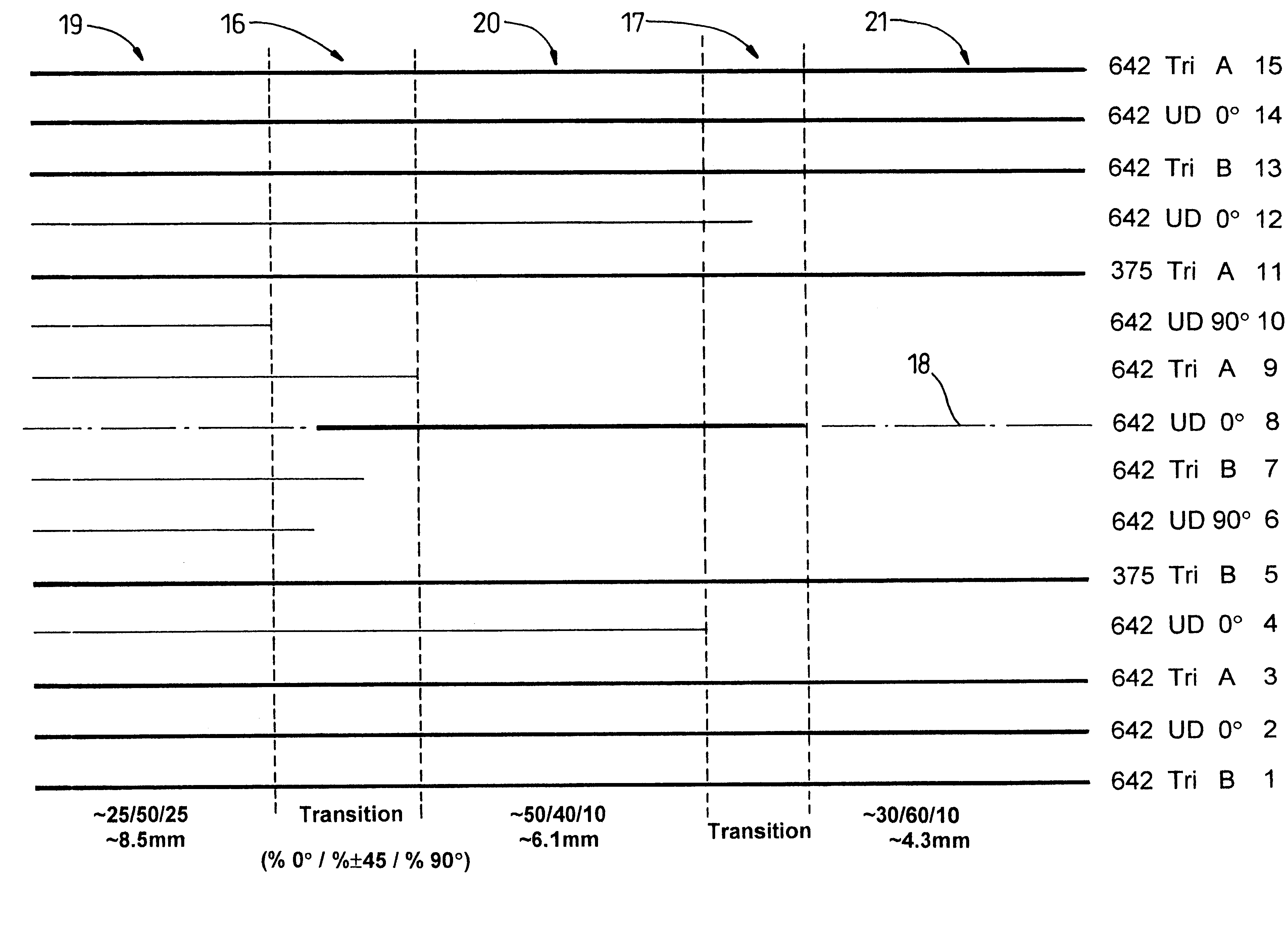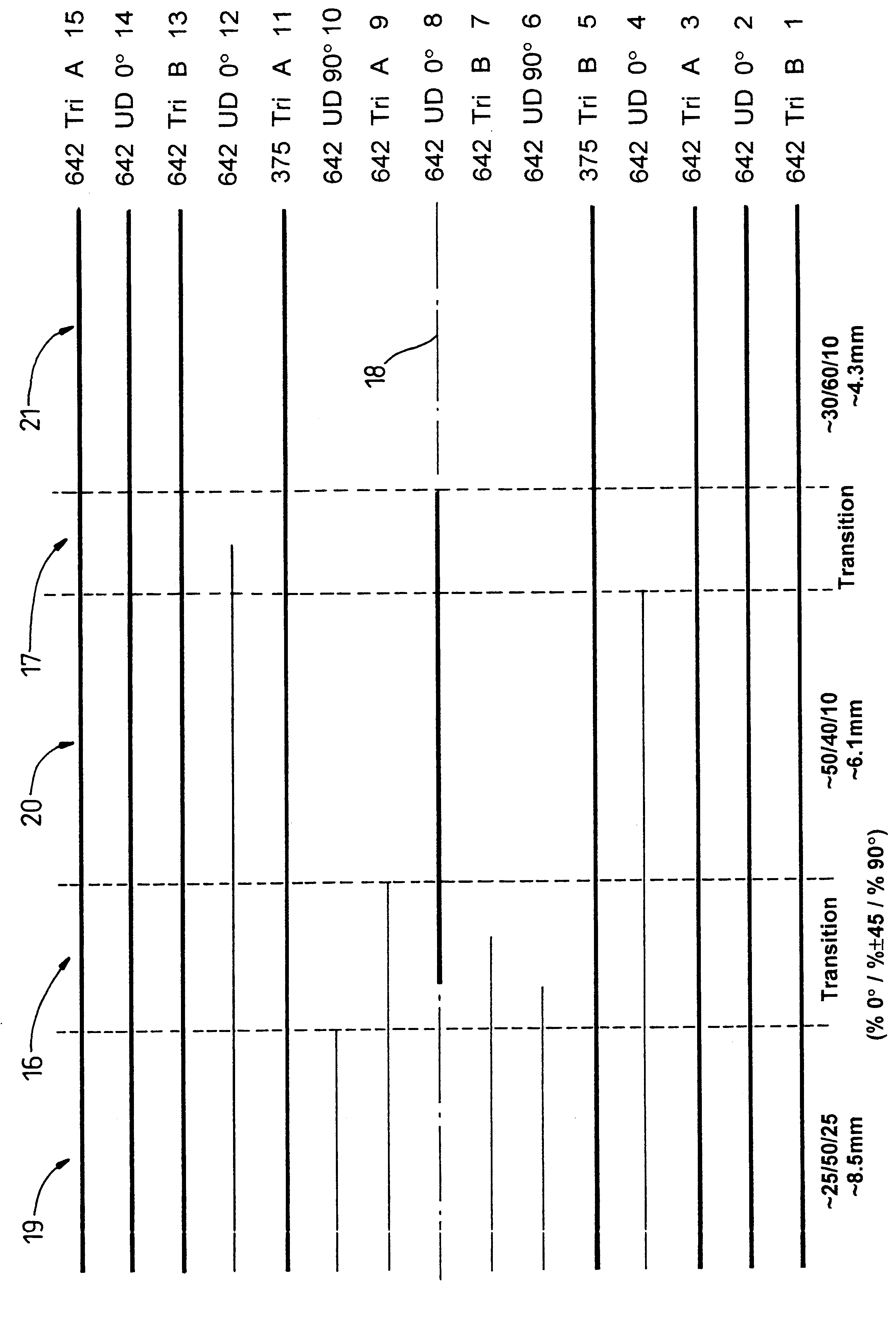Composite laminate manufacture with multiaxial fabrics
a composite laminate and multi-axial technology, applied in weaving, transportation and packaging, spars/stringers, etc., can solve the problems of a large number of "passes" of the tape head, a large number of tape head passes, and a very complex structure of the optimized aircraft wing, etc., to achieve the effect of high strength, low modulus and high modulus
- Summary
- Abstract
- Description
- Claims
- Application Information
AI Technical Summary
Benefits of technology
Problems solved by technology
Method used
Image
Examples
Embodiment Construction
In the drawing layup optimization according to the invention has been utilized to create a layup whose fibre orientation ratio and thickness varies in the spanwise direction (NB in practice it would also vary in the chordwise direction.
The horizontal lines 1 to 15 each represent fabrics, with their areal weight in grams per square meter; type, ie Triaxial or Unidirectional; their handedness, A or B or whether 0 deg or 90 deg, and their consecutive number marked on the right hand side of the figure. It will be observed that fabrics 1, 2, 3, 5, 11, 13, 14 and 15 are continuous, whereas fabrics 4, 6, 7, 8, 9, 10, and 12 are discontinuous. It will also be observed that the latter fabrics all terminate within transition regions 16 and 17. Discontinuities of the fabrics are as far as possible confined to positions as close as
possible to the neutral axis 18 of the layup. Constant thickness regions 19, 20 and 21 have percentage fibre content ratios of 0 deg, plus or minus 45 deg and 90 deg ...
PUM
| Property | Measurement | Unit |
|---|---|---|
| thick | aaaaa | aaaaa |
| thickness | aaaaa | aaaaa |
| degree of freedom | aaaaa | aaaaa |
Abstract
Description
Claims
Application Information
 Login to View More
Login to View More - R&D
- Intellectual Property
- Life Sciences
- Materials
- Tech Scout
- Unparalleled Data Quality
- Higher Quality Content
- 60% Fewer Hallucinations
Browse by: Latest US Patents, China's latest patents, Technical Efficacy Thesaurus, Application Domain, Technology Topic, Popular Technical Reports.
© 2025 PatSnap. All rights reserved.Legal|Privacy policy|Modern Slavery Act Transparency Statement|Sitemap|About US| Contact US: help@patsnap.com


